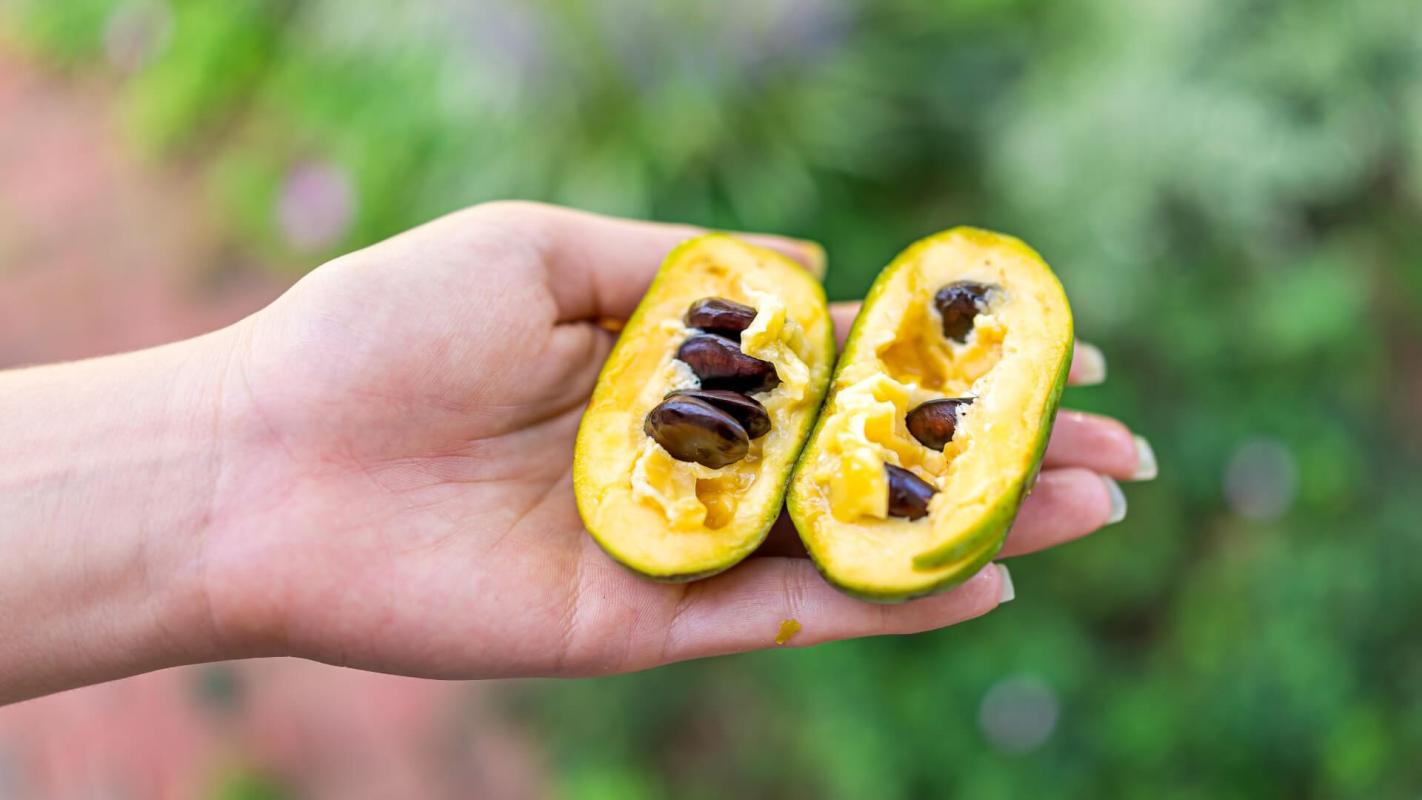Deemed a "national treasure" by some, the pawpaw fruit is as nutritious as it is delicious. Though native to North America, you won't easily find this fruit at the grocery store — at least not for now.
But as temperatures increase worldwide, the range in which pawpaw grows is expanding. Some experts are projecting this fruit will become a major cash crop in the coming years.
What do pawpaws taste like?
Pawpaws come from the pawpaw tree and is the largest fruit native to North America.
These fruits look like green potatoes and have a sweet flavor that's a cross between banana, mango, and pineapple, with a texture similar to an avocado.
Not to be confused with papaya, the pawpaw fruit is known by several colloquial names, including the "hipster banana."
Raw pawpaws are delicious and also do well in baked goods, ice cream, spreads, or even when paired with meat.
Even though the pawpaw is similar to other tropical fruits, it grows in temperate regions and stretches from northern Florida to southern Ontario.
These fruits are native to 26 states in the U.S., but they're somewhat of a rarity at your local grocery store or farmer's market because they bruise easily and have a short shelf life.
What is pawpaw fruit good for?
Besides their delicious taste, the pawpaw fruit is very nutritious.
According to Kentucky State University, pawpaws are rich sources of vitamin C, magnesium, iron, manganese, potassium, and several essential amino acids.
Warming temperatures have the potential to turn this fruit into a cash crop by creating more temperate climate regions where the pawpaw tree can grow, according to one Harvard Extension study. Anna Frej, the author of this study, wrote, "almost the entirety of New England will be well within the ideal growth range for pawpaw within the next 30 years."
Could pawpaws be the fruit of the future?
According to ScienceNews, just 13 major crops — versatile foods like wheat, corn, and rice — provide 80% of the world's total caloric intake.
The problem is not every single one of these crops can withstand a rise in temperatures and extreme weather events. So as average temperatures continue to rise worldwide, our global food supply is at risk.
Pawpaw, however, is a robust, hardy, and flexible plant that can survive extreme conditions including harsh winters, contrary to its tropical taste and appearance.
With its abundance of nutrients and ability to sustain temperatures that would harm other crops, the pawpaw fruit could bring greater food security to areas most affected by malnourishment and the repercussions of our overheating planet.
Follow The Cool Down on Instagram and subscribe to our newsletter.







